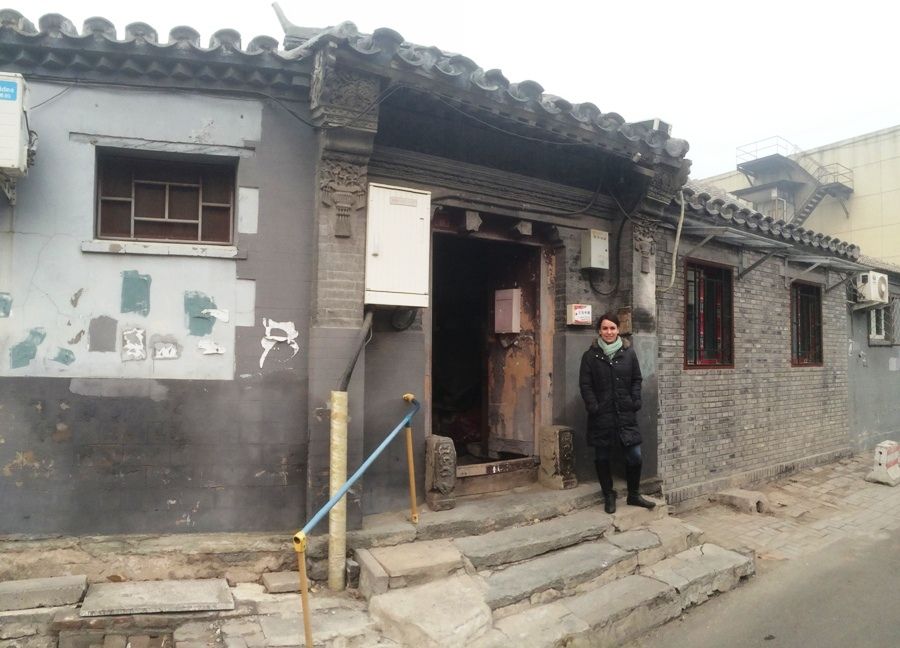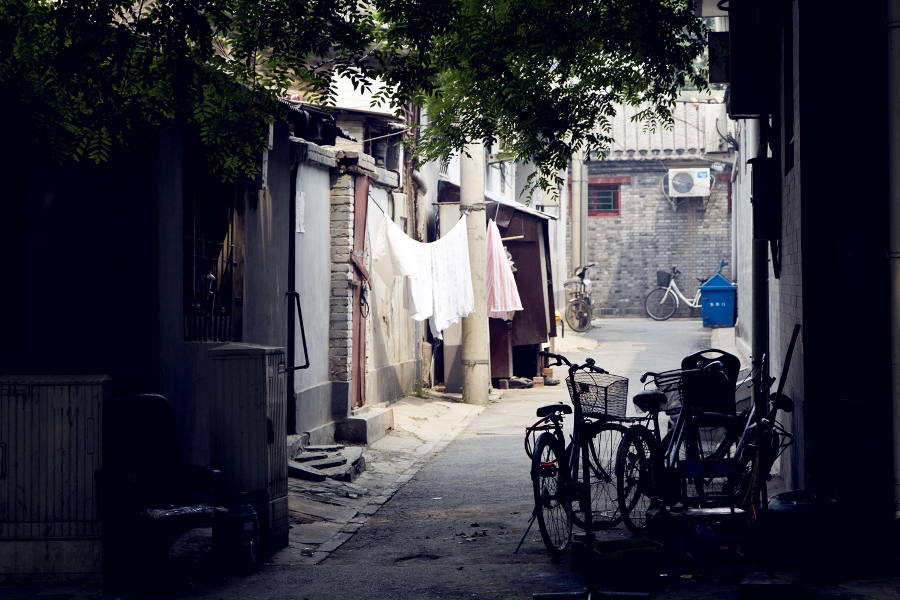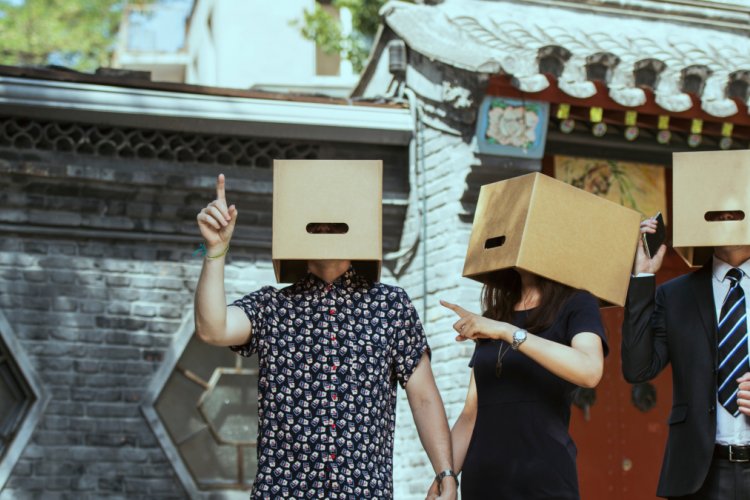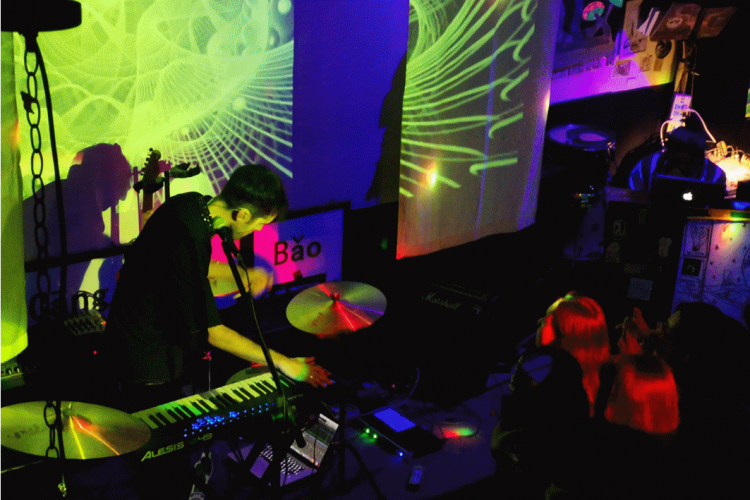Beijing Cultural Heritage Protection Center Looks to Crowdfunding to Preserve Hutong History
Rosie Levine doesn't just see the rich history in Beijing's hutongs – she also insists that those aged buildings are rife with future potential.
"You can restore hutongs in a culturally sensitive way, so that they'll not only still look good but also be more livable. So some people's attitude that: 'They're old and should be torn down' is a big misconception," says Levine, the program manager at the Beijing Cultural Heritage Protection Center (CHP), of one of the recent hutong restoration projects that her organization put on. The misconceptions she's describing are due, in part, to the lack of hutong related data and statistics on hand. That gulf of information prompted her and her colleagues to start a crowdfunding campaign to raise RMB 50,000 for a survey that they will begin conducting in March, in order to catalog the hutongs' current state and help them prosper all the more in the future.

Those findings will be reported to the government and released to the public in a book called Walk the Old City: Beijing's Hutong Handbook. Along with facts and figures, the book will also contain numerous photos and anecdotes from longtime hutong dwellers about daily life in those twisty alleyways. Below, Levine tells us more about the project, the crowdfunding campaign's other prizes, and the necessity of hutong advocacy.
What prompted you to pursue this survey?
The last comprehensive surveys were done in 2008 called Friends of Old Beijing/北京之友 (the findings of which were published in a book that can be found here). And there were other really extensive ones conducted by the government, and Tsinghua did one as well. All that work was very thorough, but there hasn't been much since. And so much between then and now has changed.
What are you hoping to find?
Some basic questions we hope to answer are: how many hutongs are left since those last surveys? How many were destroyed between then and now? We're focusing especially on the ones in heritage zones, so we also want to know how heritage zones are being maintained and protected. So we want to check in on the status of all that, and also try to determine how many shops and businesses opened in the hutongs in the past year, then check back next year to see if that is increasing. What's changing, what isn't, what the demographics are like in the hutongs – those are the things we want to answer.
Tell us more about why this is crucial. What problems could happen if you don't do this work?
The biggest risk is just that no one notices what unfolds. A lot of this stuff goes unmonitored and unregulated. So we just want to have a sense of where we're starting before changes happen, and keep good track of what's happening as it goes along. There are a lot of reasons for that. If you're advocating for cultural heritage, than a lot of your interests in these neighborhoods won't be the same as the government's. But we can look at it in a more comparative way. We can recommend to the government what to pay special attention to, maybe raise awareness about streets off Nanluogu Xiang if we determine they are becoming increasingly commercialized, and so on.
You'd hope to help prevent the hutongs from becoming too gentrified?
Yes, exactly. It's really useful to have an external body to keep track of these things.
How closely have you worked with the government? Have they been receptive?
We've submitted reports in the past and surveys, and we know they've been read, because we have friends in the government who have mentioned the reports were submitted and read. We know it's reaching people who are looking for new ways to work on this stuff, but there's obviously also a lot more going on behind the scenes that we don't know about. So I can't say for sure that they'll listen to our recommendations. But we have to try.
I expected it to be contentious than that.
It really isn't. That's another big misconception – there's actually a lot more government funding going into the hutongs than people realize. The Beijing Municipal Bureau of Cultural Heritage spends a lot of time and effort preserving not only former residences of important leaders and historical figures, but also local preservation projects on the ground in areas like Dashilanr. In those instances, they're trying to repurpose the spaces in a way that's livable, and cool and fun and interesting. Because it’s really been crap living for a lot of people – no running water, having to use public toilets, cold in winter and hot in summer, not a lot of space. So bathrooms and insulation are being put in places like Dashilanr, and in a way that still preserves the outside structure. They realize you don't have to tear it down to make it livable. So the government is using places like that as an incubator, to find out how to use the hutongs in an interesting and dynamic way.
You mentioned the misconceptions about this – why do you think that happens?
Part of it is that there was a lot of foreign media coverage about major hutong demolitions around 2008. With the Olympics approaching, the government invested a lot of money into improving infrastructure. One result was developers investing in commercial housing projects which in turn lead to the demolishing of a lot of hutongs. At the time, the media consensus seemed to be: “Beijing is razing its hutongs and making way for progress.” But there have been few updates in the foreign press about what kind of interesting projects are happening now. There hasn’t been enough follow up.
So you’re hoping this new project can spurn on that kind of follow-up.
Yeah, I hope so. That’s a big part of the book – we want to help make the hutongs more accessible and fun, so our survey will be collecting a lot of stories about people who live there. It will be like, for instance: “Here’s Mr. Wang. He's lived in this hutong for 50 years, and he remembers …” Things like that. We want to share with everyone how the cultural heritage here is really phenomenal.
You can donate to the crowdfund for CHP’s hutong survey here until January 23. It has several tiers, with the forthcoming book Walk the Old City: Beijing’s Hutong Handbook awarded to anyone who donates RMB 100, a pass to the Shijia Hutong Museum or a cooking class at Black Sesame Kitchen at the RMB 500 tier, and more. One of the most enticing prizes is a January 16 dinner and lecture at Capital M at 4pm with acclaimed Taiwanese publisher and folklorist Huang Yong Song about the Year of the Monkey. Entry for the dinner and lecture are awarded at the RMB 1,200 level, while tickets for the lecture alone can be purchased for RMB 100 here.
Photos courtesy of the Beijing Culutural Heritage Protection Center, Kyle Mullin
Related stories :
Comments
New comments are displayed first.Comments
![]() Kyle Mullin
Submitted by Guest on Mon, 01/18/2016 - 10:48 Permalink
Kyle Mullin
Submitted by Guest on Mon, 01/18/2016 - 10:48 Permalink
Re: Beijing Cultural Heritage Protection Center Looks to...
Two corrections:
1. The book linked above was NOT published as a result of CHP's 2008 survey. It was conducted around the same time in 2008 but was done by a few government agencies: 北京建筑工程学院(Beijing University Of Civil Engineering And Architecture), 北京市城市规划设计研究院 (Beijing Municipal Institute of City Planning and Design) and 北京市规划委员会 (Beijing Municipal Commission on Urban Planning). CHP's results were published as two reports as part of their Friends of Old Beijing project (Phase I Report & Phase II Report can be found here )
2. In the photo above, Rosie is standing in 交道口北三条 hutong, NOT Wudaoying.
Both were mistakes on my part. Apologies for the misunderstanding.
Validate your mobile phone number to post comments.







